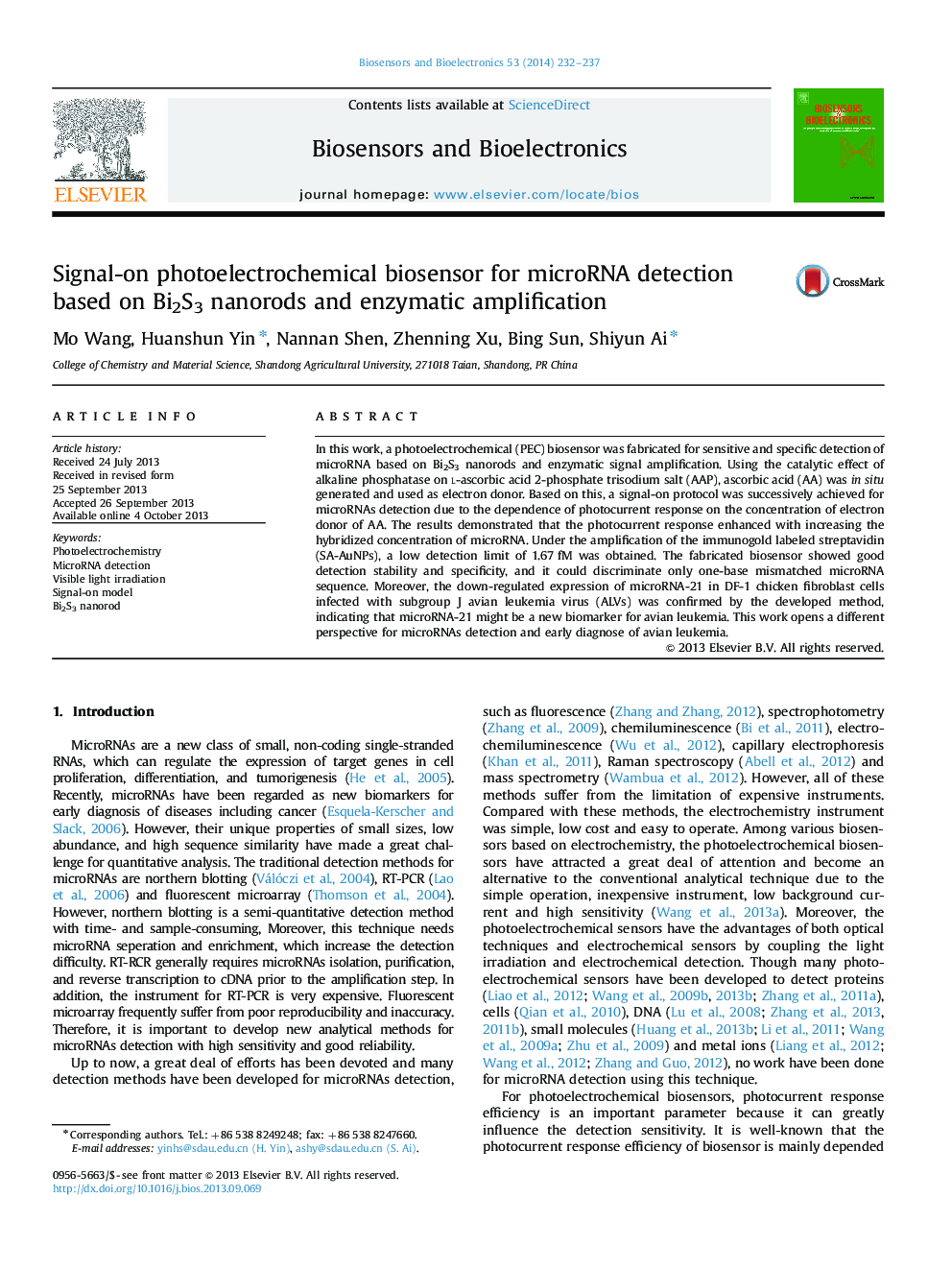| Article ID | Journal | Published Year | Pages | File Type |
|---|---|---|---|---|
| 866696 | Biosensors and Bioelectronics | 2014 | 6 Pages |
•Signal "on" and visible light photoelectrochemical biosensor was fabricated.•MicroRNA was detected using this biosensor.•Bi2S3 showed high photoactivity and generated strong photocurrent.•In situ generation of ascorbic acid catalytic by enzyme was used as electron donor.•The expression of microRNA-21 in chicken cells infected with ALVs decreased.
In this work, a photoelectrochemical (PEC) biosensor was fabricated for sensitive and specific detection of microRNA based on Bi2S3 nanorods and enzymatic signal amplification. Using the catalytic effect of alkaline phosphatase on l-ascorbic acid 2-phosphate trisodium salt (AAP), ascorbic acid (AA) was in situ generated and used as electron donor. Based on this, a signal-on protocol was successively achieved for microRNAs detection due to the dependence of photocurrent response on the concentration of electron donor of AA. The results demonstrated that the photocurrent response enhanced with increasing the hybridized concentration of microRNA. Under the amplification of the immunogold labeled streptavidin (SA-AuNPs), a low detection limit of 1.67 fM was obtained. The fabricated biosensor showed good detection stability and specificity, and it could discriminate only one-base mismatched microRNA sequence. Moreover, the down-regulated expression of microRNA-21 in DF-1 chicken fibroblast cells infected with subgroup J avian leukemia virus (ALVs) was confirmed by the developed method, indicating that microRNA-21 might be a new biomarker for avian leukemia. This work opens a different perspective for microRNAs detection and early diagnose of avian leukemia.
Graphical abstractFigure optionsDownload full-size imageDownload as PowerPoint slide
